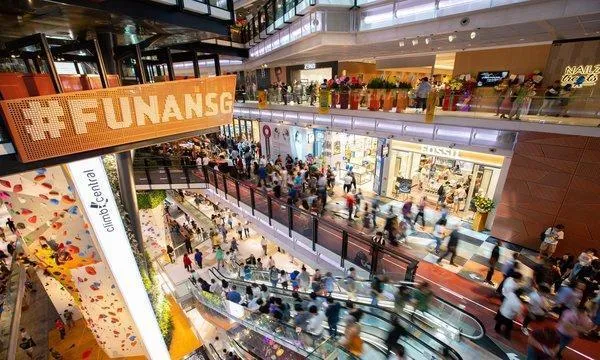
Singapore retail vacancy rate fell for the first time in Q4 2020
But the 0.8ppt fall was not enough to turn the market around for the year.
Following Phase 3 of Singapore’s reopening with a further relaxation of restrictions on activity, improved sentiment in the sector was reflected in higher shopper traffic and tenant sales. According to Savills, with around 280,000 sq ft of retail space removed from the stock, as well as retail take-up increasing by 258,000 sq ft, overall the retail vacancy rate fell for the first time by 0.8 of a ppt QoQ in Q4/2020 since Q3/2019 when the vacancy rate fell by 0.2 of a ppt.
This was also the first time that net demand turned positive after three consecutive negative quarters. Nevertheless, the improvement in Q4 was insufficient to turn the market around for the year, resulting in take-up contracting by 1.7 million sq ft in 2020. Consequently, overall vacancy rose by 1.3 ppts from 7.5% in 2019 to 8.8% in 2020.
Here’s more from Savills:
The global travel restrictions which afflicted the tourist-dependent Orchard Area was reflected in the QoQ increase of 2.5 ppts in the vacancy rate to 11.6% in Q4/2020, the highest since the data was published in 2011. On a YoY basis, the vacancy rate was up 3.6 ppts. This was led by closures of retailers and F&B outlets such as Robinsons, Charlie Brown Café and Picnic. Social distancing measures and the proliferation of e-commerce may have been the major reasons which led to retailers and F&B operators closing.
Similarly, vacancy rate across the Central Region, apart from the Orchard Area, registered YoY increases of between 1.2 ppts and 3.3 ppts in 2020. This was due to the practice of working from home which reduced office crowds. On the other hand, retail vacancy in the Suburban Area declined marginally by 0.2 of a ppt in the same period. On a QoQ basis, vacancy level in the Suburban Area fell by 1.1 ppts to 6.0% in Q4. Retail malls in the Suburban Area were more resilient as workers continue to work from home (WFH) and are likely to shop at malls near to their homes. In the quarter, retailers such as Outdoor Venture took up the space vacated by Tokyu Hands at Westgate Mall, totalling around 7,500 sq ft.
Due to weaker demand in the Central Region, the Urban Redevelopment Authority’s (URA) retail rental index declined by a larger 5.2% QoQ in Q4. In Q3, the vacancy rate was 4.5%. This was the fourth consecutive quarter of rental index falls, bringing about a 14.7% YoY drop in 2020. In contrast, rents went up 2.9% in 2019. Similarly, Savills monthly prime rents4 in Orchard Area fell at a faster pace of 7.8% QoQ to S$23.50 psf in Q4/2020, bringing about a 20.1% decline for the whole of 2020. This can be attributed to higher retail vacancies for malls in the area and landlords may need to be more flexible in accommodating desirable retail brands and refresh the trade mix.
Savills monthly prime retail rents in the Suburban Area also decreased by 6.9% QoQ to S$24.50 psf in Q4, larger than the 4.9% in Q3. For the full year 2020, retail rents in the Suburban Area fell by 14.9%. This relatively better performance compared to the Orchard Area is due to the fact that suburban malls have a more captive catchment from the surrounding housing estates and a lower reliance on tourist footfall. Additionally, the tenant mix in Suburban malls have been engineered to suit local shoppers, and with COVID-19, consumers tend not to travel too far afield from home, leading to a preference to shop in such neighborhood malls.



















 Advertise
Advertise




